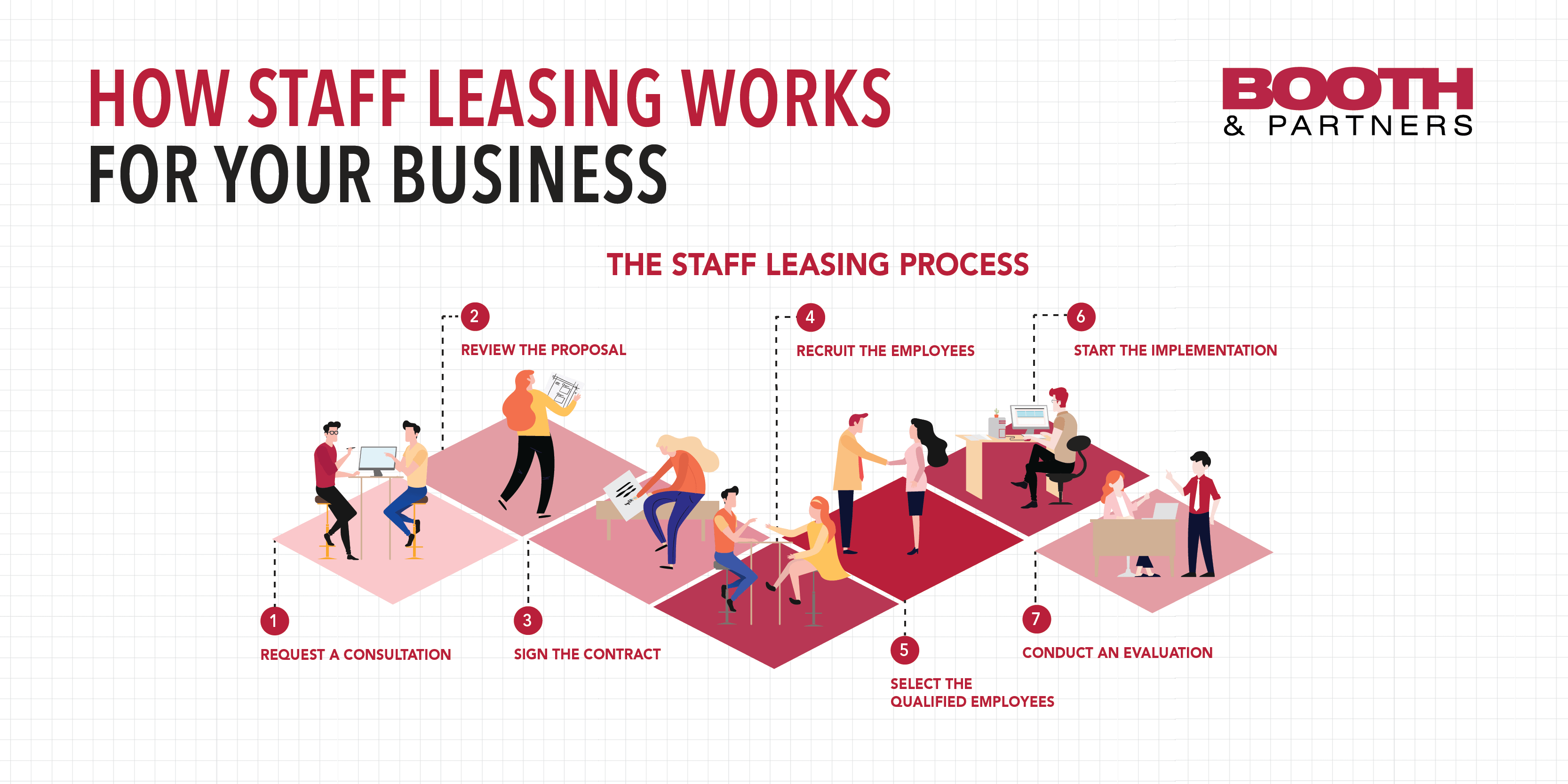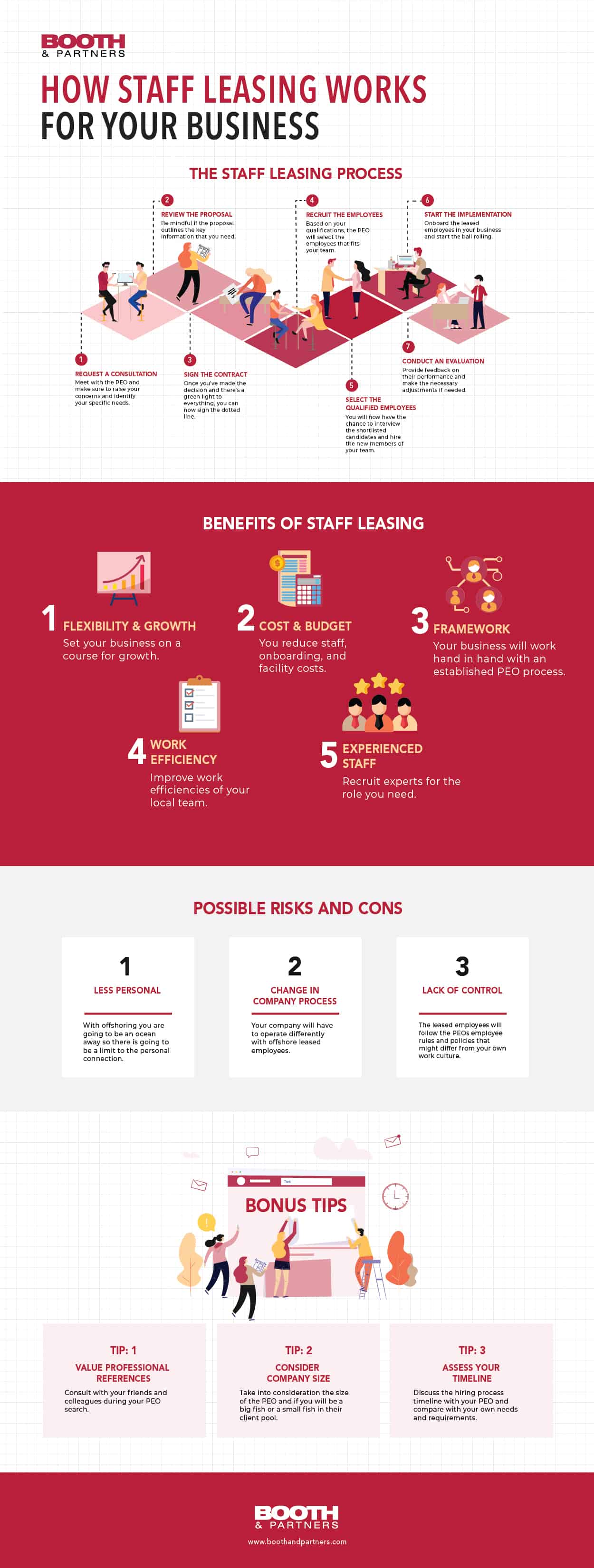
In a world of rapid innovation and globalization, businesses continually seek cost-effective ways to manage their workforce while remaining competitive. One solution that has gained traction across industries is staff leasing. This model enables businesses to access skilled professionals, streamline operations, and focus on core competencies, all while reducing overhead costs. Let’s explore how staff leasing works, its key benefits, and how it can transform your workforce strategy.
What is Staff Leasing?
Staff leasing, sometimes referred to as employee leasing or co-employment, is a staffing model where a third-party provider hires and manages employees for a client company. These leased employees work directly for the client, often as an integral part of their operations, but their employment and administrative responsibilities are handled by the leasing provider.
This approach is distinct from traditional outsourcing, which involves delegating entire business processes. Staff leasing allows companies to integrate external employees into their teams while outsourcing HR and administrative burdens to the provider.
How Staff Leasing Works
- Defining Staffing Needs
The process begins with the client identifying the roles they need to fill, the required skill sets, and the desired number of employees. This ensures that the leased team aligns with the company’s operational objectives. - Recruitment and Hiring
The leasing provider handles recruitment, leveraging their expertise to source and screen qualified candidates. This includes initial interviews, skills assessments, and background checks. - Onboarding and Integration
Once selected, the employees are onboarded and integrated into the client’s operations. While the client oversees their day-to-day tasks, the leasing provider manages employment contracts, payroll, and compliance. - Ongoing Management
Throughout the employment period, the leasing provider remains responsible for HR functions such as benefits administration, legal compliance, and handling employee concerns. This enables the client to maintain focus on operational goals.
Advantages of Staff Leasing
- Cost Efficiency
Staff leasing significantly reduces costs associated with recruitment, training, and maintaining in-house HR teams. Additionally, it eliminates the need for physical office space for remote employees, saving on infrastructure expenses. - Access to Global Talent
By partnering with a staff leasing provider, businesses can tap into an extensive talent pool that spans different regions. This is particularly advantageous for organizations seeking specialized skills or looking to overcome local talent shortages. - Flexibility and Scalability
Staff leasing allows businesses to adjust their workforce size based on demand. Whether it’s scaling up for a large project or downsizing during off-peak seasons, this model offers the flexibility to adapt quickly. - Administrative Relief
Delegating HR functions such as payroll, compliance, and benefits administration to the leasing provider reduces the administrative burden on the client. This lets businesses focus on growth and innovation. - Mitigated Legal Risks
Employment laws vary by region and are often complex. Staff leasing providers ensure compliance with local labor regulations, shielding businesses from potential legal risks and liabilities.
When Should You Consider Staff Leasing?
Staff leasing is a versatile solution suitable for businesses of all sizes and industries. It is particularly beneficial in the following scenarios:
- Market Expansion: Companies looking to enter new markets without setting up a local office can use staff leasing to establish a presence with minimal investment.
- Project-Based Needs: Organizations with short-term projects can hire leased employees for the duration of the initiative, avoiding long-term commitments.
- Specialized Roles: For niche roles requiring specific expertise, staff leasing provides access to skilled professionals who may not be readily available locally.
- Seasonal Workforce: Businesses in industries with fluctuating demand can scale their workforce up or down as needed without the complexities of traditional hiring and layoffs.
Potential Challenges
While staff leasing offers numerous benefits, businesses should be mindful of potential challenges:
- Limited Direct Control: As the provider manages employment matters, the client may have limited influence over administrative policies.
- Integration Hurdles: Incorporating leased employees into the company culture may require additional effort.
- Provider Dependence: The quality of the leased workforce relies on the provider’s recruitment standards and HR practices.
To mitigate these challenges, businesses should thoroughly vet leasing providers and establish clear communication and expectations.
Conclusion
Staff leasing is an effective workforce solution for businesses seeking flexibility, cost savings, and access to global talent. By outsourcing administrative responsibilities, organizations can focus on their core operations and drive innovation. Whether you’re expanding into new markets, addressing short-term needs, or filling specialized roles, staff leasing offers a scalable and efficient way to build your team.
As businesses continue to navigate a dynamic and competitive landscape, staff leasing stands out as a strategy that balances operational efficiency with workforce agility. By understanding its mechanics and benefits, organizations can harness its potential to thrive in an ever-evolving global market.
